The career opportunities for aspiring futsal players are limited with few professional futsal leagues and teams. Even the best leagues in the world feature players who are not full-time and far too frequently clubs suffer financial problems with salaries left unpaid.
Overall, the sport is still heavily underdeveloped, causing many to miss out on experiencing this wonderful game. Currently, it is very dependent on the limited support that can be leveraged from football and generated by its lucrative competitions. With that comes the inevitable obligation for futsal to help service the interests of football rather than a complete focus on its own needs.
Further, there isn’t a strong, or at least accurate, identity for the game in many places as I have written about previously here. This is the case in England where many possess a vague idea of futsal as some form of football development tool or exhibition platform for skills and nutmegs. The majority of people would love this sport but this false perception doesn’t provide inspiration to discover more about it.
These three problems stem from a lack of interest in the elite game. If it was able to attract a significant audience then this would generate revenues through match attendances, broadcasts and sponsorship. These revenues would be distributed to players, increasing the number of professional careers available, and to the sport’s development. Further the exposure to futsal competitions would promote an understanding of what the game truly is.
So how do we develop futsal competitions to generate more interest in them?
Research Project
Over the last year I have been dedicated to answering this question through an extensive research project, completely self-funded, for my recently concluded UEFA Masters. Although the full report is not currently publicly available, I would like to share a couple of extracts that I hope will be of interest to the futsal community.
To discover the answer, the first task was to find out why this hasn’t happened until now with FIFA acknowledging “the development of futsal competitions and leagues for both men and women around the world is still in its formative stage”.
Here in Part 1 I present the findings from my investigation into the reasons futsal competitions are in their current state. Part 2 offers the highlights from interviews into how to develop sport competitions, and in particular those in futsal, that I conducted with leading sport industry professionals from across the world.
Note that as this was a submission for my masters, it is written in a more academic way than my usual posts. I hope you enjoy reading it!
Part 1
Historical Background
Futsal’s first world championships in 1982, when the sport was still known as indoor football, were hugely popular with fans in host city Sao Paulo. It was organised by the then only international governing body for futsal, FIFUSA. The beginning of rapid growth caught the attention of FIFA and they created their own version of indoor football inspired by FIFUSA’s.
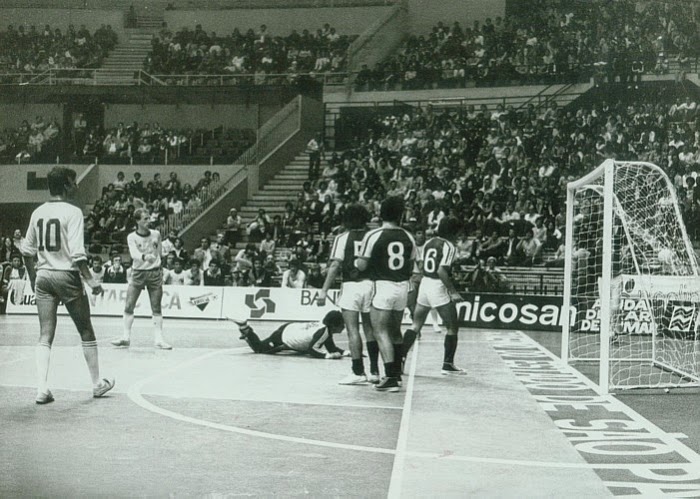
FIFA tried to stop the use of the word football by FIFUSA (since reformed as AMF) through legal means but were unsuccessful. In any case, FIFUSA started using the name futsal, an abbreviation of the Portuguese for indoor football, at their next world championships.
Ironically, FIFA later adopted the term futsal and it was first used at their World Cup in 1996. The two organisations held discussions about unifying but they failed to reach agreement. Both continue as independent entities today governing different versions of futsal.
The competition for FIFA’s futsal from AMF’s is limited as many of those involved in the latter were persuaded to switch over to FIFA’s alternative. Its popularity is confined to certain regions and there are no professional competitions.
Other rivalry comes from the many regional small-sided football variants that share a resemblance with futsal and became popular before FIFA established its own futsal around the world. They have even had competitions that attracted TV audiences of millions and game attendances of tens of thousands in countries such as Australia, England, Germany and USA. These no longer continue and only in the USA is there an indoor soccer league that claims to be professional.
These small-sided football variants remain very popular to play recreationally in certain geographical areas. For example, a few years ago in England 10 times the number were playing some form of small-sided football compared to futsal, though this may be overstated as futsal participation data is often not recorded.
The power of FIFA, which describes futsal as its only officially recognised “small-sided football format”, with its network of members, established governance structures and the prominence attained through football has seen its futsal gain increasingly global coverage.
Increasing Numbers Playing
There was an 18% increase in the number of FIFA’s members associations playing the sport between 2006 and 2012 and there has been a further 13% increase according to the latest figures. During the same decade the number of people playing futsal worldwide doubled, compared to an increase of 13% for football. FIFA claim that it “is the fastest growing indoor sport in the world” with 60 million registered players worldwide.
Research has found strong evidence for links between playing and being a fan of a sport. A survey by sports consultancy Winners found those currently playing football spend over six times more on attending games than those that have never played and over twice more than those that used to play. Even having a child that plays football results in consuming the sport to similar levels of those that were playing or had played.
However, the popularity of playing futsal is not translating effectively into interest into watching the game. For example, in Spain, there are 2 million sport participants playing futsal but the average attendance for the top league is between 2500 to 3000 thousand.
Two possible explanations that are contributing to this situation are proposed. One is that futsal’s introduction has been relatively recent in some regions, and mainly through youth participation, so there will be a delay before the growth translates into fan interest. However, this could not be applied to the case in Spain.
Another is the link between participation and fandom is disrupted by the elite game of recreational futsal being perceived to be football.
Futsal & Football
The characteristics of futsal make it susceptible to being positioned as an understudy to football. Firstly, through being a more accessible way to participate in football as it has similar rules but requires fewer players, less space and is playable in any weather or climate. The other reason is the more challenging conditions than football, due to the reduced space and quicker surface, mean it is utilised to develop football players.
The latter role as a football player development tool has been promoted in the media who, with the strong demand for football coverage, present futsal through the lens of football. There have been numerous articles taking this angle and featuring renowned football stars who discuss how futsal helped them.
FIFA predominantly regards futsal in relation to football. It offers its members across the globe a document entitled “Futsal’s Development Programmes and Guidelines”. Within its pages it describes futsal as “first and foremost a game in its own right” but in the following sentence as “the football game of choice for many” and later in the same document as a “variation of football”, a “format of football”, “a player development tool and a game in its own right”, a “form of indoor small-sided football”, a “variation of football” and a “football discipline”.
Inevitably, this approach has trickled down to its members worldwide. The FA Benefits of Futsal document states “FIFA, UEFA and The FA are keen to support the development of futsal for a number of reasons, but primarily for the recognised benefits that futsal offers for the technical development of football players”.
Rather than having its own sport development pyramid with a connected thread from recreational to elite level, futsal has been positioned at the base of the football pyramid. It can be expected that football will have reaped much of the benefit from the growing futsal participation and the demonstrated link between playing a sport and being a fan of it.
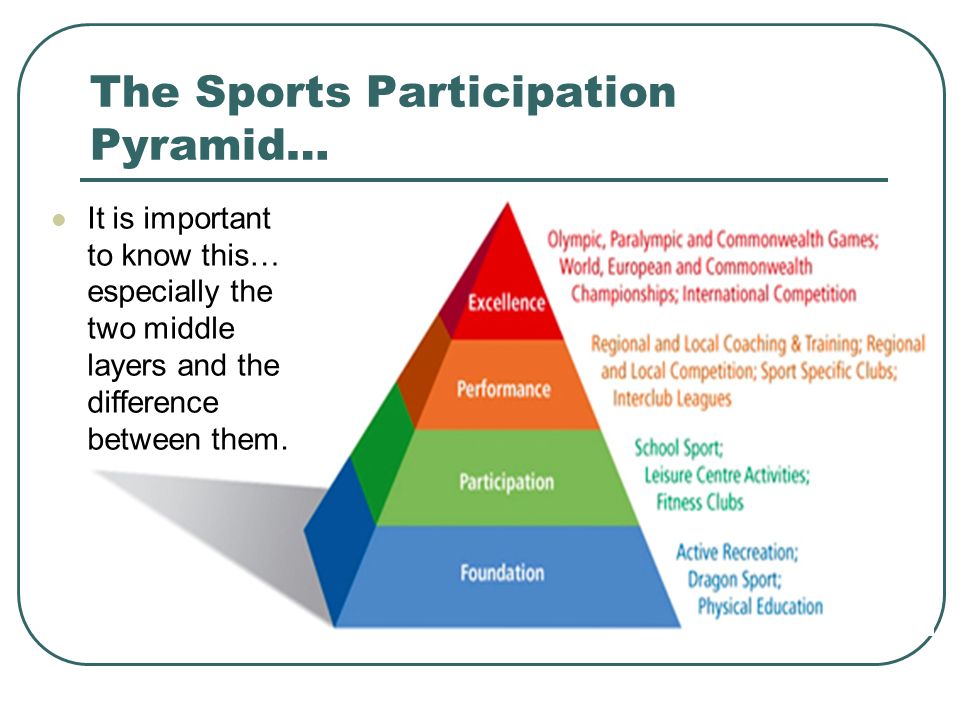
This positioning of futsal has shaped a public perception of futsal as a recreational game or skill development activity, undoubtedly causing severe damage to its attractiveness as an entertainment product. The optimistic start with the popularity of the first World Cup nearly 40 years ago and the current strong participation numbers have not led to the significant fan interest that would be anticipated.
The next section investigates the potential market for futsal competitions that is not currently being exploited.
Market For Futsal Competitions
With the lack of publicly available market research on futsal, the potential for its competitions will be estimated by examining the introduction of the short-formats of several major team sports. This is felt relevant as futsal has been described as a shorter-format of football.
It is a “shorter, faster, indoor and more exciting variant of football” according to The Financial Express, The FA describe it as an “exciting, fast-paced small sided football game” and Sky Sports as football’s “entertaining little brother”.
Basketball, cricket and rugby union were chosen as they are all hugely popular team sports like football and their new formats emerged from games that were popular recreationally like futsal.
They have all experienced rapid success. FIBA only began organising 3×3 basketball competitions in 2010 but its rapid rise will mean it will debut just ten years later at the 2020 Olympics. Similarly, the popularity of rugby sevens, with its first major annual tournament in 1999, led to its inclusion in the 2016 Olympics. This added 30 million rugby union fans, around 10% of the total global number. The 2016-2017 World Rugby Sevens grew its cumulative attendance by 10% on the previous year to a record of just under three quarters of a million.
Twenty20 has become the most popular format of cricket with the over 1 billion existing fans within fifteen years of its first professional competition. Twenty20’s Indian Premier League (IPL) was estimated to be worth $4.1 billion just a few years after its formation. The similarity between twenty20 cricket and futsal has been identified multiple times, including by one of the executives that conceived and designed the IPL and commented;
“I saw in futsal a potential to do what the IPL had done to conventional cricket. This sport, for all its flamboyance and far more use of ball control and technique, hasn’t really got the attention that it deserves and I thought there was a definite proposition for the Indian audience.”
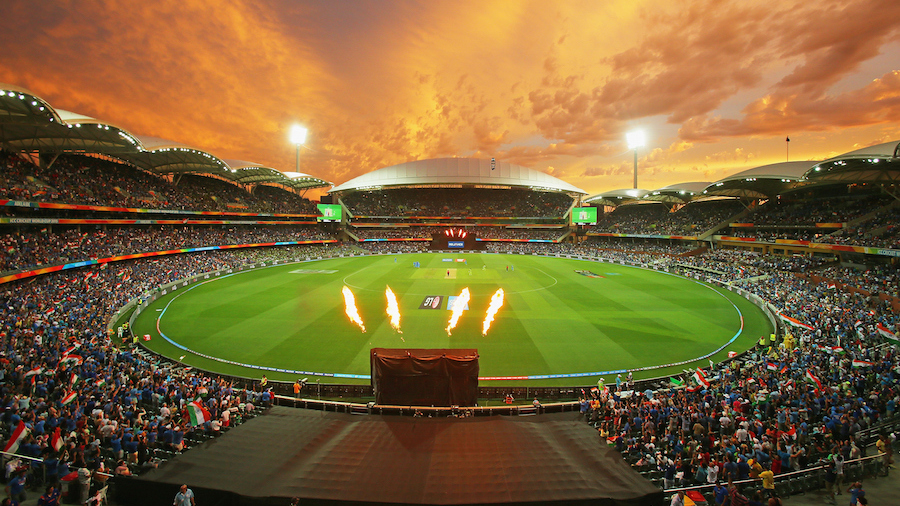
All three of these short formats have been found to engage existing and new audiences to their sports, notably among youth and female demographics. Similarly, a futsal tournament held in India in 2016 was also found to be popular with a female audience.
The Lack Development Of Futsal Competitions
The success for the governing bodies of these new games in cricket and rugby union is highlighted by the fact they are now developing newer and even shorter formats, the latter creating an indoor 5-a-side version. From this a key question emerges.
Why have these sports invested in developing competitions and leagues of their shorter-format versions, which have succeeded in their own right and grown their sports as a whole, while the majority of football governing bodies have not? FThe development of futsal competitions “is still in its formative stage” in the opinion of FIFA.
The likely reason is they developed them because of a strong need for solutions to grow their sports. Cricket faced falling attendances and dwindling interest in the sport when twenty20 was identified as the solution in research by The English Cricket Board. FIBA embraced 3×3 basketball to achieve its vision “to make basketball the most popular sports community in the world” .
World Rugby had the aim to increase the global spread of rugby union. The chairman of the International Rugby Board commented after the first ever World Rugby Series, ”this competition has set in place another important element in the IRB’s drive to establish rugby as a truly global sport”. As well as the additional 30 million fans from the 2016 Olympics, research shows rugby sevens has promoted the sport in previously untapped and emerging markets.
In contrast, football has been riding a wave of sustained success with soaring revenues in the whole time since it governed futsal. Between 1978 and 2014, FIFA’s annual revenues grew from $10 million to an astonishing $1.9 billion. The UEFA European Championships revenues were €41 million in 1992 and by 2016 had reached over €1.9 billion. This leaves little incentive for the governing bodies to look at other avenues for growth when this is being provided at unprecedented rates through their football offering.
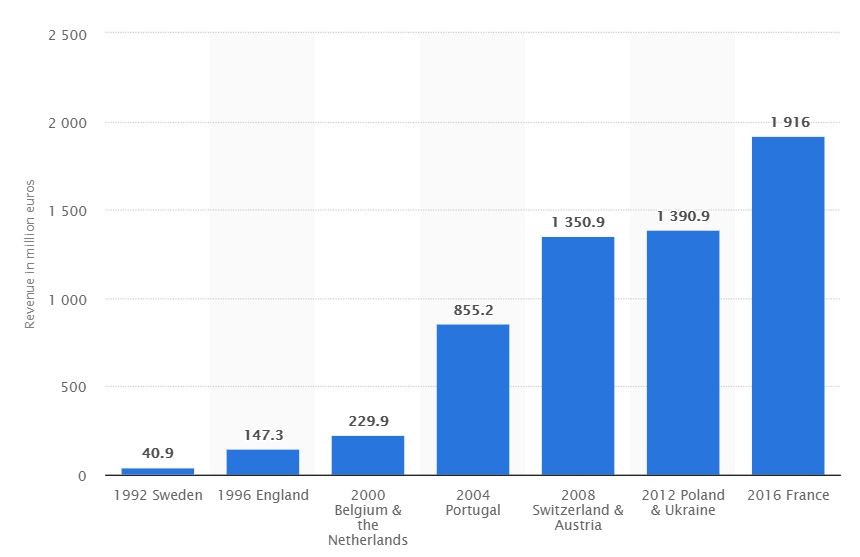
So instead of seeing it as something that can attract fans in its own right and increase the numbers following the associated game, in this case football, as has occurred in these other sports, the impression as an understudy has endured. That is, as a development tool or more accessible version for football. Already it is clear there is a strong explanation for the lack of development of futsal competitions but there is a further substantial motive.
This is that it has been considered a rival to football. UEFA cites this in the case of the lack of support shown in Europe. They contend that “futsal had long been the subject of misconceptions, often being considered in opposition to football and regarded as competing with its ‘big brother’. That explains why it was neglected for so long in Europe – a continent where football’s power is absolute. That perception has changed significantly in recent years, with the European approach to futsal now mirroring that seen on the other side of the Atlantic, where it has always been regarded as an excellent player development tool.”
The evidence suggests these fears are unfounded. Rugby union, cricket and basketball developed their new games in order that their traditional formats would gain rather than lose fans. This has been proven in the case of rugby sevens presence at The Olympics which increased the overall number of rugby union fans.
In cricket, the international governing body has also had a similar concern to those in football. The Guardian reported that The International Cricket Council want to regulate the explosive growth of the twenty20 version to protect the traditional format. The evidence doesn’t support this perspective.
Research found that the introduction of a twenty20 competition in England and Wales had increased domestic demand for cricket attendance overall and did not lead to reduced stadium attendances for the traditional format. This has added significance when it is considered that the previous decline of those attendances was the reason twenty20 was introduced.
It is easy to understand why holding this perspective, despite it appearing to be unfounded, would provide a compelling incentive to avoid the development of futsal competitions. Those football equivalents that are generating huge and growing revenues principally fund the governing bodies’ activities. It can be assumed they would wish to protect against anything that is a perceived threat to this.
In the statement UEFA claim that the perception has changed significantly from being a rival to being an “excellent player development tool”. This could be viewed as progress, but it still doesn’t provide a convincing reason to end the neglect of futsal at the elite level.
Support for futsal only as a way to develop better football players reinforces the view that the football authorities still only see futsal in terms of how it can benefit football. Developing higher skilled football players would be expected to increase the attractiveness, and hence the value of, football competitions.
Correlation Between Independence And Success
The observation that the most successful futsal leagues have organisational and governance structures where there is some independence from the football governing bodies conforms with the idea that direct control by these authorities may be hindering futsal competitions development. This may encourage better strategic focus as there is a duty to develop a futsal competition as the ultimate objective, rather than how it can benefit football. These leagues are in Brazil, Russia and Spain and have generated enough interest to claim professional status.
Before going into further detail, it must be understood and clear that the time the sport has had to establish itself in those countries is likely one of the contextual reasons to explain their success. Whether there is a causal relationship between autonomy in decision making and success can’t be tested robustly due to an insufficient amount of competitions.
The LNFS in Spain, the world’s most popular league alongside Brazil, has an organisational structure responsible solely for futsal and was formed before FIFA and its members’ involvement in the sport. The Spanish league is run by an organisation that is an association of clubs that has an arms-length relationship with the national football federation, the RFEF, from which it receives no funding. Even within the RFEF there is a separate body that has sole responsibility for futsal. It can be observed that the structures in the professional leagues and federations in Brazil and Russia are similar to Spain.
Outside of these leagues, the other competition success story is the UEFA Futsal Euro, the European championships for nations. The last edition increased revenues by over 200% to more than €650,000, with a TV audience of over 30 million and attendance of over 100,000 cumulatively across the 10 match days.
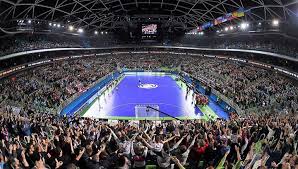
The UEFA Futsal Euro is unique in the fact that it benefits from the structure within UEFA. It is organised by its wholly owned subsidiary, UEFA Events SA, which also organises all its football competitions. The futsal competition is supported by the same world class expertise and procedures that are standard for some of the biggest sport events in the world and the investment that is made to capitalise on these.
The impact on perceptions from producing a successful futsal competition may explain UEFA’s recent statements on futsal that offer a contrast to those of other governing bodies. It has described it as “a sport in its own right, it’s growing all around the world… and its competitions are constantly gaining in stature” and “a truly international phenomenon”.
With this reformed opinion has come expansion and development of its futsal competition portfolio in response to “the strong growth in demand in Europe” with new male youth and female competitions and the rebranded UEFA Futsal Champions League.
This extract has highlighted the current identity of futsal and how this impacts the interest in the highest level. The sports of basketball, rugby union and cricket have launched competitions of shorter games of their traditional formats that share similarities to futsal with rapid success.
The combined fanbases of these three sports are approximately the same as football’s, indicating an even bigger opportunity for futsal. However, during an incredible and sustained period of growth for football, futsal has been overlooked.
If this opportunity is to be exploited, what do futsal competitions need to do?
Read Part 2 here with the opinions of leading sport industry professionals on how futsal competitions should be developed.
Great work!
I love your content and your twitter.
I feel that the challenge with futsal in football-dominant countries is that many minds are made up about futsal (i.e. they see it as a child’s game or a development tool). With the momentum that football has and the fame and fortune in football, I think it’ll be difficult for futsal to have a foothold as its own entity. From a simple incentive based look, any young, talented futsal player would have to consider football even if their first love is futsal.
I still believe where there is space for futsal is in areas outside of Europe. If you look at the YouTube views for the U-20 AFC Japan-Afghanistan finals, there are over 200k+ for that match. The quality of that video isn’t even that good and the players aren’t professionals! My sense is that this shows that there is an audience for futsal in Asia and I feel that the community should capitalize on this. Additionally, I was looking for futsal highlights on YouTube and I happened on the new Malaysian futsal league. Again, the footage is pretty bad and the quality of the match isn’t great, but it had over 25k+ views. There are not many videos with the LNFS or the LNF (Brazil) that have that many views, especially for a regular season game. Given how the Chinese Super League pays outlandish money in a terrible football league, I foam-at-the-mouth at what Chinese money, a dedicated marketing campaign– and promotion from the CCP (haha)– could do for the sport.
Interestingly, I think that the US could be a place for futsal because we have such good basketball infrastructure. If we were to run the sport after the NBA season/playoffs (i.e. summer), it would be a great opportunity to utilize otherwise empty facilities. Furthermore, the only other competition– live play-wise– would be Major League Baseball, which is declining in popularity with younger generations. It’s definitely a difficult sell in the United States but compared to going head-to-head with football, it might be a better bet. In many ways, I wish MLS was futsal instead of football. Here, the Professional Futsal League is having a demonstration match after many years of nothing so maybe there’s life in it yet!
One last point: at this stage, I think that futsal should utilize retired footballers to promote the sport. I think India’s Premier Futsal was actually quite smart in bringing in Ronaldinho, Scholes, Crespo, etc. In the initial years, I think that some star power would be helpful to build some buzz and then let the product speak for itself. It’s a gamble but I think the sports needs more people to give it a chance.
Very interesting comments Andrew which I enjoyed reading.
I agree with your points on Asia and US. Lots of potential with the right investment and strategy.
Your point on futsal not being able to be its own entity and players who prefer futsal choosing to pursue a career in football is something I am confident we can change even if it is difficult to envisage currently. Let’s check back in 20 years!!
Best wishes.
Thanks for the response.
I’m going to geek out: I’ve been watching the Copa Libertadores and I think I like the Brazilian/South American rules “understanding” better. The game seems to be much less physical.
I also think maybe they should outlaw slide tackles. (I would allow sliding to block shots to continue)
Also: do you have any sense how professional futsal is doing vis-a-vis professional volleyball, rugby or team handball in Europe? (the less popular sports?) (i.e. pay, attendance, etc.)
Also 2x: The following is a link on an American trying to broaden lacrosse’s footprint in the US by branding the athletes. I’m rooting for him because if he succeeds, futsal might have a chance here.
Hi Doug, brilliant article. I am a futsal player and languages student at UoN. I have to complete an extended translation project next academic year as part of my coursework and I’ve chosen sport as my topic. If given the freedom, would you allow me to translate part 1 (and perhaps part 2) into Spanish? I grew up in Tenerife so the level will be high and all usage would be yours. Thank you.
Football players that did not played futsal at grassroot , can not play futsal at elite level , but Futsal players that played futsal from age of 5 years old till 13 years old , can be adjust to play Football at elite level .